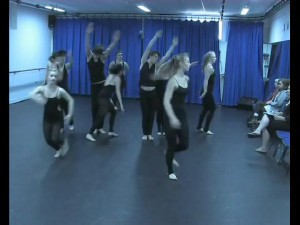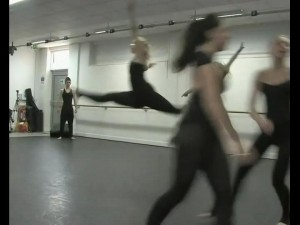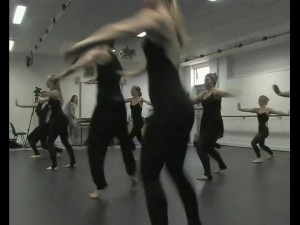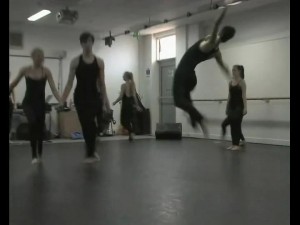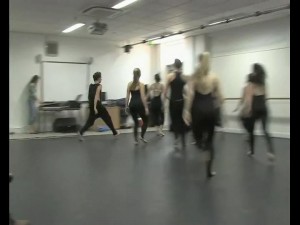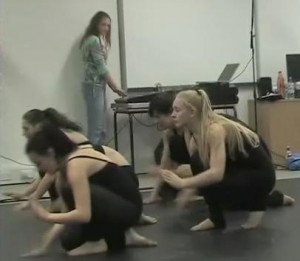We Are Bodies is a collaborative piece of work investigating the interaction between music and dance. As composer, I joined forces with talented choreographer and teacher, Odette Perdrisat, to work through ideas and produce a performance involving a group of young dancers from Harlow College. The piece was compiled ‘live’ during three days of workshops and was performed in a dance space surrounded by loudspeakers. It involved percussive movement integrated with electroacoustic music, which was at times localised, the spatial location being controlled live.
“We made musical changes and choreographic changes based on just the elements of the two art forms coming together… balancing and working together well … I think I’ve adapted and you’ve adapted, is that fair to say?”
-Odette Perdrisat
Concept
I wished to investigate a very bodily concept: a set of ideas which I felt needed exploration through actual, physical movement and experimentation. I wanted to see the effects of music on dancing bodies; I did not want choreographed dancers ‘acting out’ the feeling of joyous physical movement, I wanted it embodied, created, produced. It seemed to me this would necessitate a chance element to the choreography and the piece as a whole. This, combined with the memory of chaotic yet intentional movement around a space [see ‘Inspiration’, below] and the questions this posed, plus an interest in spatialisation of sound, suggested the exploration of a dance space surrounded by loudspeakers and the use of sound location to provide an unpredictable element to the composition. This could be seen in the sections where the dancers flocked or advanced towards a speaker as unit, in ways which organically evolved.
Whilst some of the sonic themes existed before we started work as a group, the music was largely composed and completed during the workshop days. The music incorporates percussive sounds recorded during the workshopping process, as well as allowing space for the sounds created by the dancers live during the performance.The audience was very small and located almost within the dance/sound space, reflecting the way this investigation of process was very much something to be experienced live, particularly in the more dynamic moments.
Inspiration
When I was about thirteen, some friends and I sneaked into the school hall one lunch time, to run about. We wanted to play ‘catch’ but had no ball, so we linked our sets of keys together to form a huge, heavy, spiky, frankly rather dangerous projectile, which we began to fling and leap for, in a two-sided, aimless game of ‘keep-away’. Run, dodge, signal, judge the parabola, leap, twist, catch, spot a gap and an intention, throw again before you’ve even taken two steps… We really needed our wits about us. We were youthful energy in motion- keeping in harmonious flux, avoiding collisions, drops and impacts. Was it the ‘ball’ or some other kind of ‘direction’, which drove our vigorous murmuration around the space? Our natural physicality, the sense of control and quick response, contrasting with the excitement of the unpredictable, the interplay of chance and intention, the easy composition of shape and rhythm of movement, both as individuals and together: these elements all combined to produce a feeling of pure joy, of being, in our diversity, ‘good human specimens’ – fully inhabiting our own bodies, whatever those bodies were like. This feeling stayed with me and surfaced again, years later, as an ideal concept to explore, share and express through music and dance.
